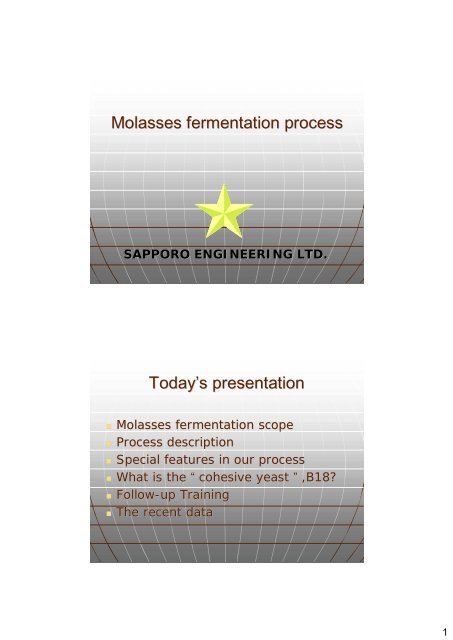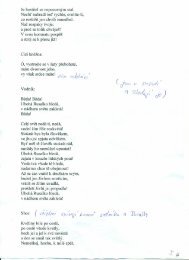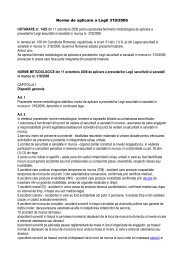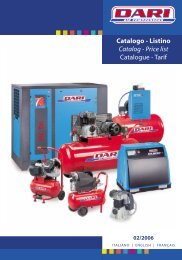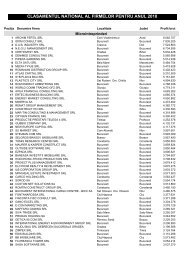Molasses fermentation process.pdf - Webgarden
Molasses fermentation process.pdf - Webgarden
Molasses fermentation process.pdf - Webgarden
You also want an ePaper? Increase the reach of your titles
YUMPU automatically turns print PDFs into web optimized ePapers that Google loves.
SAPPORO SCOPEWaterPropagationFermentationStorage<strong>Molasses</strong>YeastBrothLiquor400ton/Day2 Lines 28kl 2 tanks400kl 4 tanks280kl 3 tanks/1series2 seriesLayout of the <strong>Molasses</strong> area2 tanks of storage<strong>process</strong>6 tanks of <strong>fermentation</strong><strong>process</strong>2 tanks of propagation<strong>process</strong>material feed <strong>process</strong>3
Today’s s presentation• <strong>Molasses</strong> <strong>fermentation</strong> scope• Process description• Special features in our <strong>process</strong>• What is the “ cohesive yeast ” ,B18?• Follow-up TrainingT• The recent dataWaterSAPPORO SCOPE1. Material feed <strong>process</strong><strong>Molasses</strong>YeastBrothLiquorPropagationFermentationStorage4
Fermentation <strong>process</strong>• Conversion from sugar to ethanol(About 10% ethanol concentration)• 24 hours <strong>process</strong> including feed/out• Cooling, circulation system/each tank• Yeast repeatedly re-use system (Using special yeast, B18)• Parallel operation in 6 tanksHWDefoamingreagentWatermolasessStorage tankHEXAsepticairYeast mud tankSAPPORO SCOPE4. Storage <strong>process</strong>Water<strong>Molasses</strong>YeastBrothLiquorPropagationFermentationStorage7
Storage <strong>process</strong>• Conversion from remaining sugar to ethanol• Cushion tank for the purpose of continuous outputto Evaporation• Separation of carbon dioxide• 1 storage tank can receive 2 times of fermentedliquidHWFermentation liquorEvaporation<strong>process</strong>Today’s s presentation• <strong>Molasses</strong> <strong>fermentation</strong> scope• Process description• Special features in our <strong>process</strong>• What is the “ cohesive yeast ” ,B18?• Follow-up TrainingT• The recent data8
The unique <strong>process</strong>,“ Repeated batch <strong>fermentation</strong> ”• The origin of this <strong>process</strong> is J-alcoJalco’sethanol production plant.• This <strong>process</strong> has many merits,• Mechanical separation is not necessary.• Strong tolerance with bacteria• Easy to change the capacity of plant• High efficiency, Low operation cost.J-alco is a Leading company ofethanol business in Japan.The basic concept of thismolasses unique <strong>process</strong> and thespecial yeast B18 is supportedby J-alco.Repeated Batch ProcessFermentationStoragePropagationYeast can separate and recover by using it’s cohesive character.Yeast can be separated without any separation machine.9
Why you should chose us?• Yeast <strong>fermentation</strong>• Simple technology from ancient times.• On the other hand, it’s s a Deep science.• Special design with Brewerie‘sexperience.• Large scale fermentor, , Piping• Cleaning system, other equipments“Industrial aseptic concept”Why you should chose us?• The most important concept is“ Everything should be User-friendlyfriendly. “• Our view point is always on user side- Not only construction,- We can support all scene in project• Plenty of Know-How in <strong>fermentation</strong>10
Today’s s presentation• <strong>Molasses</strong> <strong>fermentation</strong> scope• Process description• Special features in our <strong>process</strong>• What is the “ cohesive yeast ” ,B18?• Follow-up TrainingT• The recent dataCohesive yeast, B18• The Japanese original yeast forethanol production.• High tolerance for temperature andethanol content.• Particular character in its flocculation• Easy to separate from liquor (Broth)• No need to have a separation machine.11
Fermentation tank Cohesive yeast, B18 Yeast Today’s s presentation• <strong>Molasses</strong> <strong>fermentation</strong> scope• Process description• Special features in our <strong>process</strong>• What is the “ cohesive yeast ” ,B18?• Follow-up TrainingT• The recent data12
In comparison with chemical plant• Special design for microorganism• Worker needs technical knowledge.• Manager should be quite familiarwith <strong>process</strong> theory .• It is very difficult to prepare thesestatus from beginning.Follow-upTrainingWhyfollow-up?up?• Improvement Management skill Operation skill Analysis skillTrainingmenu• Control skill for all of the facilities• How to check the condition of <strong>process</strong>• Review of analysis & measurement skill“Productivity has improved. ”13
Today’s s presentation• <strong>Molasses</strong> <strong>fermentation</strong> scope• Process description• Special features in our <strong>process</strong>• What is the “ cohesive yeast ” ,B18?• Follow-up TrainingT• The recent dataAssumption of design• Ethanol production :33,000kLyear (110kLday)• Yield : 85%• Repeat number of cycle : 8 times• Volume of <strong>fermentation</strong> liquid : 1,600kLkLcycle• Ethanol production after <strong>fermentation</strong>: 145tcycle14
The recent data of production• This graph is recent production.• Production (kL(kL/day) is “95105kL/day”11010090807060Production [ L Day]50 2008 year 2009 yearThese data was given by TRE.The recent data of <strong>fermentation</strong>Yield• Almost trial could clear our target yield.(>85%)Repeat number, Volume of <strong>fermentation</strong> liquid• Target repeat number is 8 times (total volume:1600kL),and most of these trial could reach to 10 times.Target yield: >85%Target yield: >85%Target repeat number :Over 8times ( >1600kl) These data was given by TRE.This trial period is 4 months from January 2009.15
The recent data of <strong>fermentation</strong>Production of ethanol after <strong>fermentation</strong>• Target number is 145cycle,almost trial could clear our target .Yeast cell density• Yeast cell density reached several hundred million.(Start cell density : 1.01010 8 cell/ml) Target number :145cycleJanuary February March April8Start cell density110 8 cellml Thank you very much.16


